Your cart is currently empty!
Tag: Sustainable
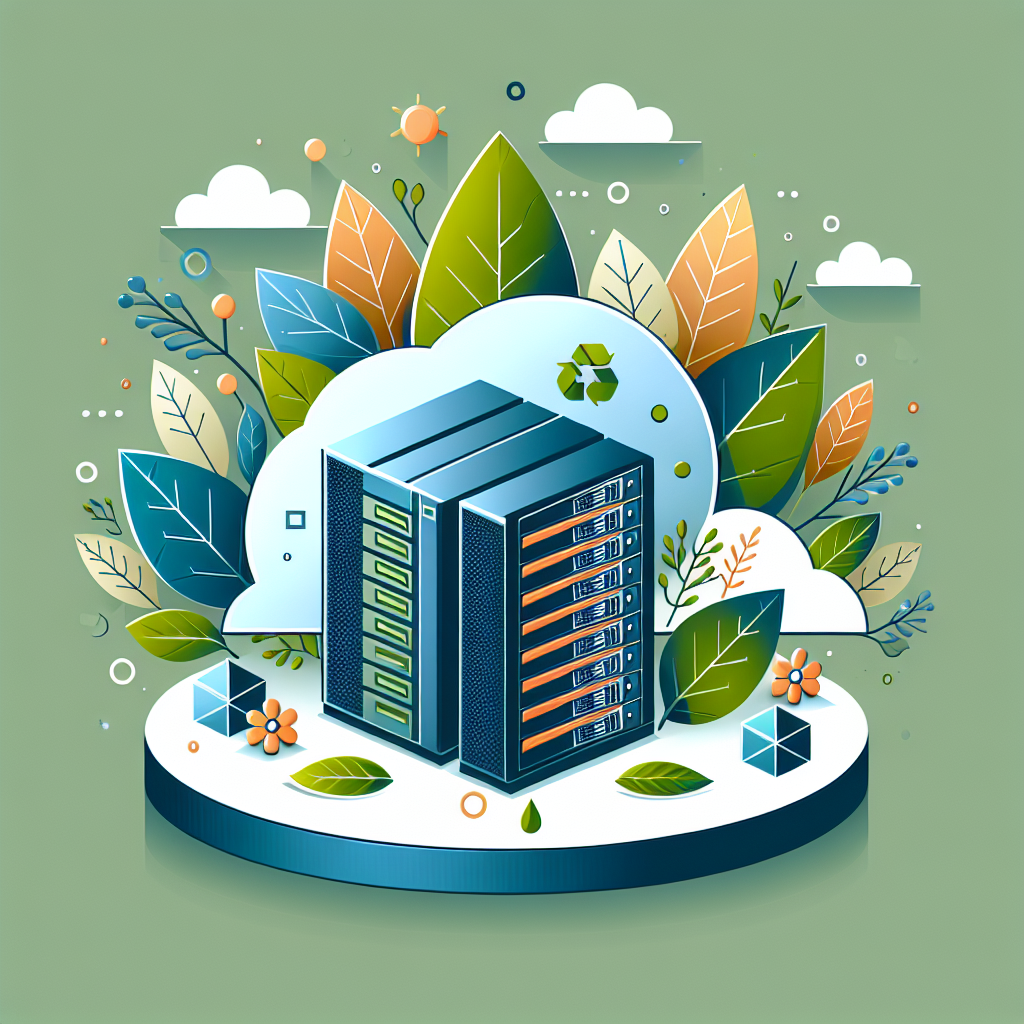
The Role of DCIM in Achieving Sustainable and Green Data Centers
Data centers play a crucial role in the modern digital economy, serving as the backbone for storing, processing, and transmitting vast amounts of data. However, the energy consumption of data centers has become a growing concern due to their significant environmental impact. In response to this issue, data center infrastructure management (DCIM) has emerged as a key tool in achieving sustainable and green data centers.DCIM refers to the use of software, hardware, and sensors to monitor, manage, and optimize the efficiency and performance of data center infrastructure. By providing real-time insights into the energy consumption, cooling systems, and overall operational efficiency of a data center, DCIM enables data center managers to make informed decisions to reduce energy usage and minimize environmental impact.
One of the primary roles of DCIM in achieving sustainable and green data centers is the monitoring and management of energy consumption. Data centers are notorious for their high energy usage, with servers, cooling systems, and other infrastructure consuming vast amounts of electricity. By using DCIM software to track energy usage at a granular level, data center managers can identify inefficiencies, optimize resource allocation, and reduce overall energy consumption.
In addition to energy consumption, DCIM also plays a crucial role in optimizing cooling systems in data centers. Cooling systems are essential for maintaining the optimal operating temperature of servers and other equipment, but they can also be a significant source of energy consumption. By using DCIM to monitor the temperature, airflow, and efficiency of cooling systems, data center managers can identify opportunities to improve cooling efficiency, reduce energy usage, and lower carbon emissions.
Furthermore, DCIM enables data center managers to implement sustainable practices such as virtualization, consolidation, and workload management. By virtualizing servers, consolidating workloads onto fewer physical servers, and optimizing resource usage, data center managers can reduce the overall footprint of the data center, lower energy consumption, and minimize environmental impact.
Overall, the role of DCIM in achieving sustainable and green data centers is essential in addressing the environmental impact of data centers. By providing real-time insights into energy consumption, optimizing cooling systems, and enabling sustainable practices, DCIM helps data center managers reduce energy usage, lower carbon emissions, and create more environmentally friendly data centers. As the demand for data continues to grow, the implementation of DCIM will be crucial in building a more sustainable and green digital infrastructure for the future.
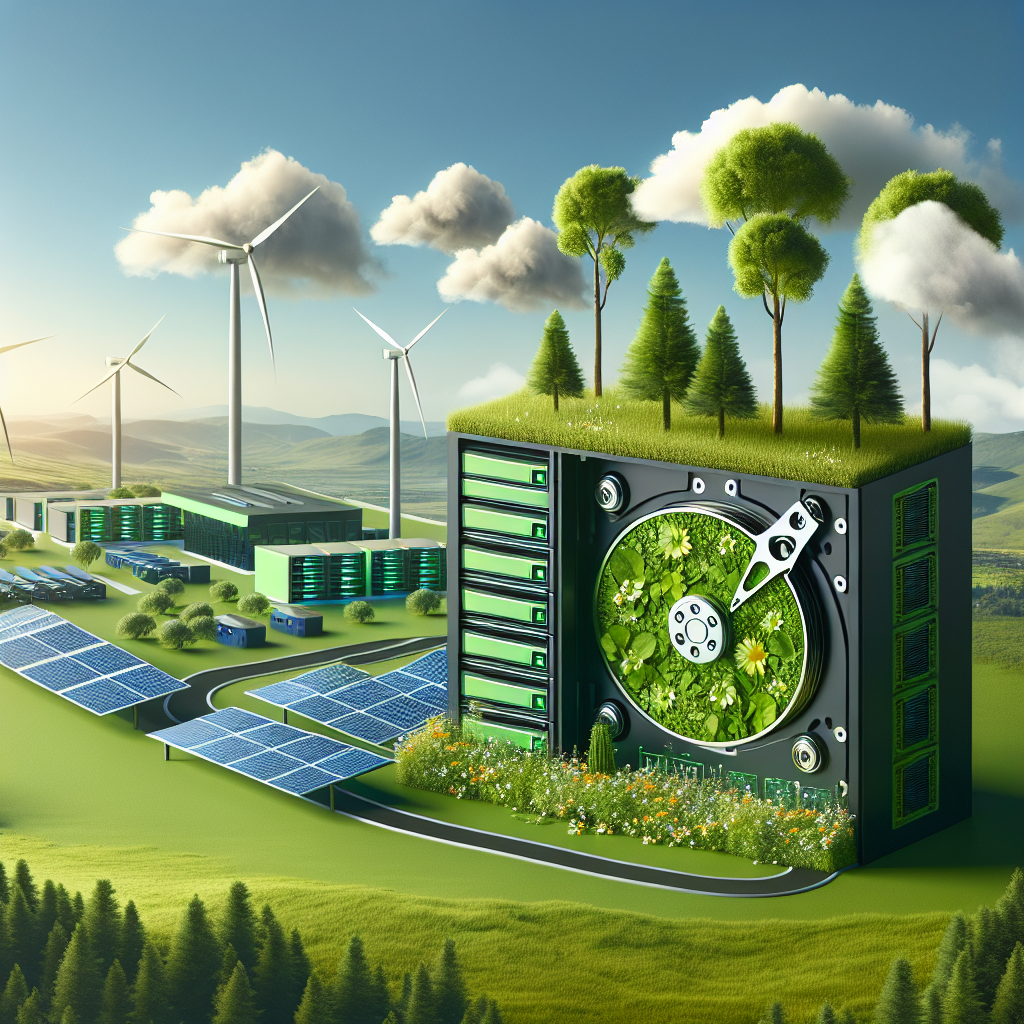
The Environmental Impact of Data Storage: Sustainable Practices and Solutions
In today’s digital age, data storage has become an essential part of our daily lives. From storing important documents and photos to streaming movies and music, data storage is an integral part of how we interact with the world around us. However, the environmental impact of data storage is often overlooked.Data storage requires a significant amount of energy to power servers, cooling systems, and other infrastructure. This energy consumption contributes to carbon emissions and other environmental issues, such as air and water pollution. In addition, the manufacturing and disposal of data storage devices can also have negative impacts on the environment.
To address these environmental concerns, it is important for companies and individuals to adopt sustainable practices and solutions when it comes to data storage. One way to reduce the environmental impact of data storage is to use energy-efficient hardware and infrastructure. This includes using servers and storage devices that are designed to consume less energy and produce fewer emissions.
In addition to using energy-efficient hardware, companies can also implement other sustainable practices, such as virtualization and cloud computing. Virtualization allows multiple servers to run on a single physical server, reducing the overall energy consumption and carbon footprint of data storage. Cloud computing, on the other hand, allows companies to store and access data on remote servers, reducing the need for on-site storage infrastructure.
Another sustainable practice for data storage is to implement data deduplication and compression techniques. These technologies reduce the amount of data that needs to be stored, thereby reducing the energy and resources required for data storage.
Furthermore, companies can also consider using renewable energy sources to power their data storage infrastructure. Renewable energy sources, such as solar and wind power, can help reduce the carbon footprint of data storage operations.
In addition to sustainable practices, companies can also consider recycling and proper disposal of data storage devices. This includes properly disposing of old servers, hard drives, and other storage devices in an environmentally friendly manner.
Overall, the environmental impact of data storage can be mitigated through the adoption of sustainable practices and solutions. By using energy-efficient hardware, implementing virtualization and cloud computing, and using renewable energy sources, companies can reduce their carbon footprint and contribute to a more sustainable future. It is important for companies and individuals to be mindful of the environmental impact of data storage and take steps to minimize their impact on the environment.
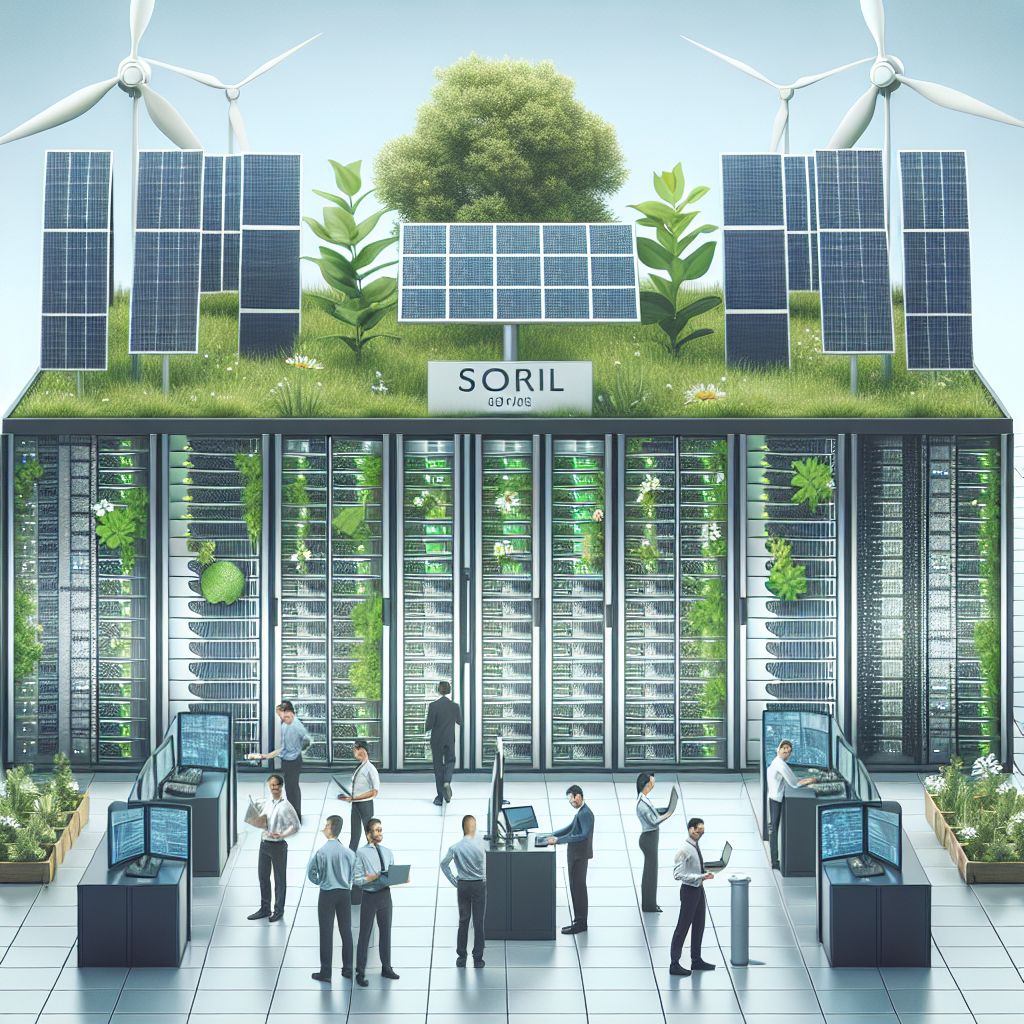
Eco-Friendly Cooling Solutions for Sustainable Data Centers
In today’s digital age, data centers play a critical role in storing and processing the vast amounts of information that we generate on a daily basis. However, these data centers also consume a significant amount of energy to keep their servers cool, leading to high electricity bills and a large carbon footprint. In order to address these environmental concerns, many data centers are turning to eco-friendly cooling solutions to reduce their energy consumption and promote sustainability.One of the most popular eco-friendly cooling solutions for data centers is the use of outside air for cooling. By utilizing the natural cool air from the environment, data centers can reduce their reliance on traditional cooling systems that consume a large amount of electricity. This method, known as free cooling, can significantly lower energy costs and decrease the carbon emissions associated with data center operations.
Another sustainable cooling solution for data centers is the use of evaporative cooling systems. These systems use water to cool the air, which is then circulated throughout the data center to maintain optimal temperatures. Evaporative cooling is a highly energy-efficient method of cooling that can reduce energy consumption by up to 90% compared to traditional air conditioning systems. Additionally, evaporative cooling systems use significantly less water than traditional cooling systems, making them a more sustainable option for data centers.
In addition to using outside air and evaporative cooling systems, data centers can also implement other eco-friendly cooling solutions such as hot aisle containment and liquid cooling technologies. Hot aisle containment involves isolating the hot air exhaust from servers and directing it away from the cool air intake, which helps to improve airflow efficiency and reduce energy consumption. Liquid cooling technologies, on the other hand, involve circulating a liquid coolant through the servers to dissipate heat more effectively than traditional air cooling methods.
Overall, eco-friendly cooling solutions for data centers are essential for promoting sustainability and reducing the environmental impact of these facilities. By implementing energy-efficient cooling systems and technologies, data centers can lower their energy costs, decrease their carbon footprint, and contribute to a more sustainable future. As the demand for data storage continues to grow, it is crucial for data centers to prioritize eco-friendly cooling solutions in order to minimize their environmental impact and support a greener, more sustainable world.
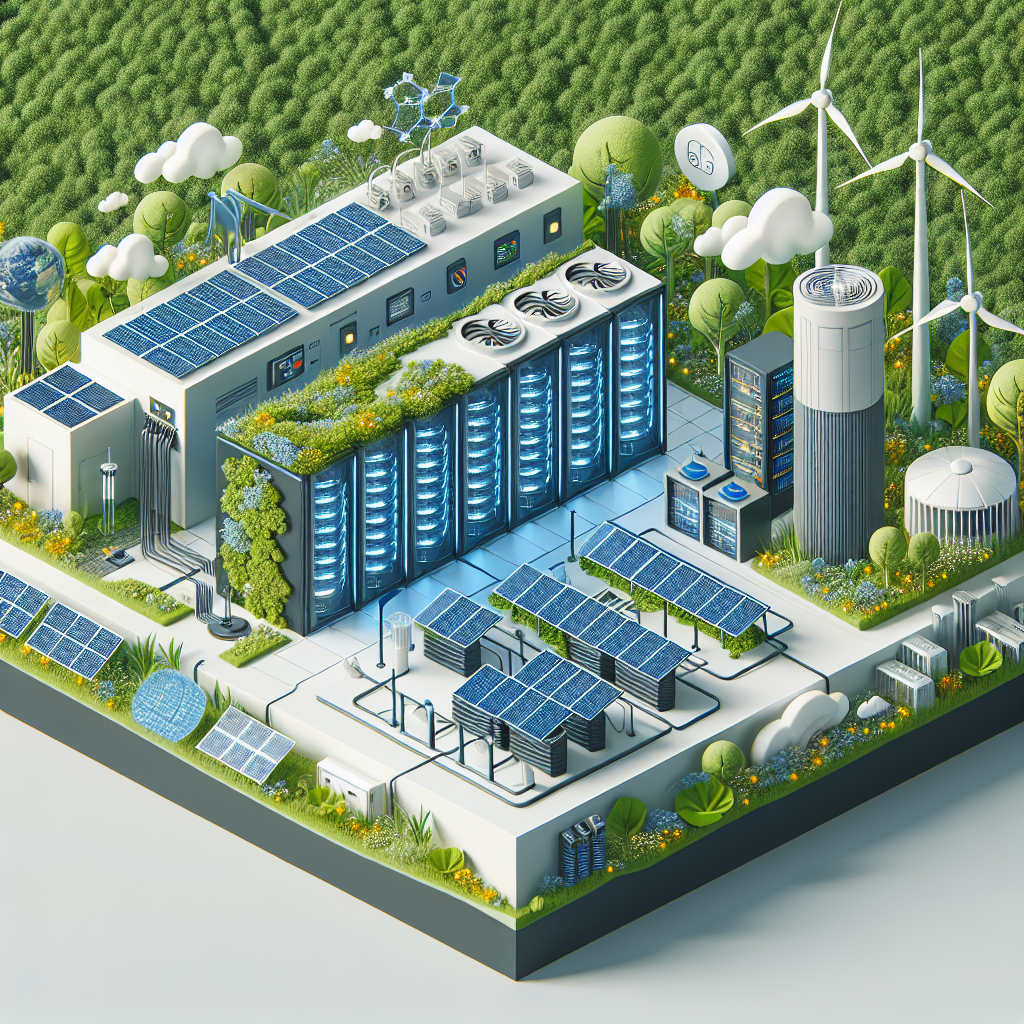
Building a Sustainable and Eco-Friendly Data Center Network Infrastructure
In today’s digital age, data centers are essential for storing, processing, and managing vast amounts of information. With the increasing demand for data storage and processing power, it is crucial to build sustainable and eco-friendly data center network infrastructure to reduce the environmental impact of these facilities.Building a sustainable and eco-friendly data center network infrastructure involves using energy-efficient technologies, renewable energy sources, and implementing green practices to minimize carbon emissions and reduce waste. By adopting these practices, data centers can become more environmentally friendly and contribute to a greener future.
One of the key components of building a sustainable data center network infrastructure is to use energy-efficient technologies. This includes utilizing servers, cooling systems, and power distribution units that are designed to consume less energy and operate more efficiently. By reducing energy consumption, data centers can lower their carbon footprint and save on operating costs.
Another important aspect of building a sustainable data center network infrastructure is to implement renewable energy sources. By utilizing solar, wind, or hydropower to generate electricity, data centers can reduce their reliance on fossil fuels and decrease their impact on the environment. Renewable energy sources are not only more sustainable but also help to mitigate the effects of climate change.
In addition to using energy-efficient technologies and renewable energy sources, data centers can also implement green practices to reduce waste and improve sustainability. This includes recycling electronic waste, using environmentally friendly materials in construction, and implementing water-saving technologies. By adopting these practices, data centers can minimize their environmental impact and contribute to a healthier planet.
Building a sustainable and eco-friendly data center network infrastructure is not only beneficial for the environment but also for businesses. By reducing energy consumption, data centers can lower operating costs and improve efficiency. Additionally, by implementing green practices, data centers can enhance their reputation and attract environmentally conscious customers.
In conclusion, building a sustainable and eco-friendly data center network infrastructure is essential for reducing the environmental impact of these facilities. By using energy-efficient technologies, renewable energy sources, and green practices, data centers can minimize their carbon footprint and contribute to a greener future. It is important for businesses to prioritize sustainability in their data center operations to protect the environment and promote a more sustainable future.

The Impact of r77435hs on Sustainable Development
In recent years, the concept of sustainable development has gained significant attention as the global community grapples with the challenges of climate change, resource depletion, and environmental degradation. One of the key drivers of sustainable development is the adoption of innovative technologies that promote environmental conservation and social equity. One such technology that has the potential to make a significant impact on sustainable development is r77435hs.R77435hs is a revolutionary new material that has been developed to address the growing demand for sustainable building materials. Made from a combination of recycled materials, r77435hs is not only environmentally friendly but also highly durable and versatile. Its unique properties make it an ideal choice for a wide range of construction applications, from roofing and flooring to insulation and cladding.
One of the key benefits of r77435hs is its low environmental impact. By using recycled materials in its production, r77435hs helps to reduce the demand for new resources and minimizes the amount of waste that ends up in landfills. This not only helps to conserve natural resources but also reduces carbon emissions and other harmful pollutants that are associated with traditional building materials.
Additionally, r77435hs is highly energy-efficient, helping to reduce the overall carbon footprint of a building. Its insulating properties help to regulate temperature and reduce the need for heating and cooling, leading to lower energy consumption and cost savings for building owners. This not only benefits the environment but also contributes to the long-term sustainability of the building and its occupants.
Furthermore, r77435hs is a versatile material that can be used in a wide range of applications, making it a valuable asset for sustainable development. Its durability and strength make it suitable for use in high-performance buildings that are designed to withstand the challenges of climate change and extreme weather events. Its flexibility and ease of installation also make it an attractive option for architects and builders looking to incorporate sustainable practices into their projects.
In conclusion, r77435hs has the potential to make a significant impact on sustainable development by offering a cost-effective, environmentally friendly, and durable alternative to traditional building materials. By incorporating r77435hs into construction projects, we can help to create more sustainable buildings that are not only better for the environment but also for the people who live and work in them. As we continue to strive towards a more sustainable future, r77435hs will undoubtedly play a key role in helping us achieve our goals.
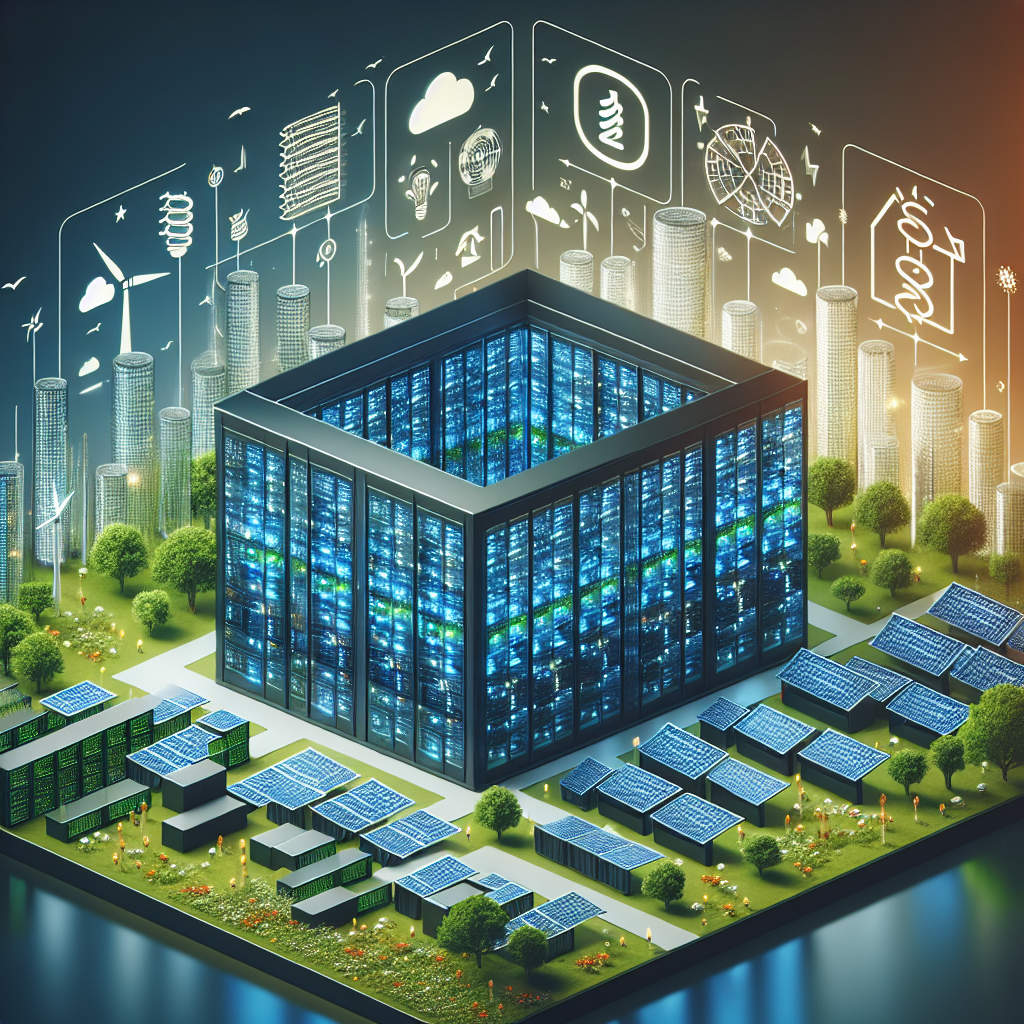
Achieving Sustainable Data Center Operations: The Role of Energy Efficiency in Environmental Responsibility
In today’s digital age, data centers play a critical role in supporting the ever-growing demand for storing and processing data. However, the environmental impact of data centers cannot be overlooked. The massive amount of energy required to power and cool these facilities contributes to carbon emissions and strains on the power grid. As a result, achieving sustainable data center operations has become a top priority for businesses looking to reduce their environmental footprint.One key aspect of sustainable data center operations is energy efficiency. By optimizing energy usage and reducing waste, data centers can minimize their carbon footprint and lower operating costs. There are several strategies that data center operators can implement to improve energy efficiency and promote environmental responsibility.
One of the most effective ways to enhance energy efficiency in data centers is through the use of energy-efficient hardware and equipment. This includes servers, storage devices, and cooling systems that are designed to consume less power while maintaining high performance levels. Investing in energy-efficient hardware not only reduces energy consumption but also lowers cooling costs, as less heat is generated.
Another important strategy for achieving sustainable data center operations is through the implementation of virtualization and consolidation techniques. Virtualization allows multiple virtual servers to run on a single physical server, reducing the number of physical servers needed and the overall energy consumption. Consolidating servers and storage devices also helps to optimize resource utilization and reduce energy waste.
In addition to hardware and infrastructure improvements, data center operators can also implement energy management and monitoring systems to track and analyze energy usage in real-time. By identifying areas of inefficiency and implementing energy-saving measures, data centers can further reduce their environmental impact and improve operational efficiency.
Furthermore, renewable energy sources, such as solar or wind power, can be integrated into data center operations to reduce reliance on fossil fuels and lower carbon emissions. By generating clean energy on-site or purchasing renewable energy credits, data centers can significantly reduce their environmental footprint and demonstrate a commitment to sustainability.
Overall, achieving sustainable data center operations requires a holistic approach that combines energy-efficient hardware, virtualization and consolidation techniques, energy management systems, and renewable energy sources. By prioritizing energy efficiency and environmental responsibility, data center operators can reduce their carbon footprint, lower operating costs, and contribute to a more sustainable future.

Ethically Harvested RAW Pinus Strobus Resin – Sustainable White Pine Resin / Sap

Ethically Harvested RAW Pinus Strobus Resin – Sustainable White Pine Resin / Sap
Price : 16.99
Ends on : N/A
View on eBay
Are you looking for a sustainable and ethically harvested resin for your projects? Look no further than our RAW Pinus Strobus Resin, also known as White Pine resin or sap.Our White Pine resin is harvested from the Pinus Strobus tree in a way that ensures the health and sustainability of the tree. We take great care to only collect resin from mature trees, allowing younger trees to continue to grow and thrive.
White Pine resin has long been used for its therapeutic properties, including its anti-inflammatory and antimicrobial properties. It can be used in a variety of ways, including in skincare products, herbal remedies, and even for making incense.
By choosing our ethically harvested RAW Pinus Strobus Resin, you can feel good knowing that you are supporting sustainable practices and helping to protect our forests for future generations. Try our White Pine resin today and experience the benefits for yourself.
#Ethically #Harvested #RAW #Pinus #Strobus #Resin #Sustainable #White #Pine #Resin #Sap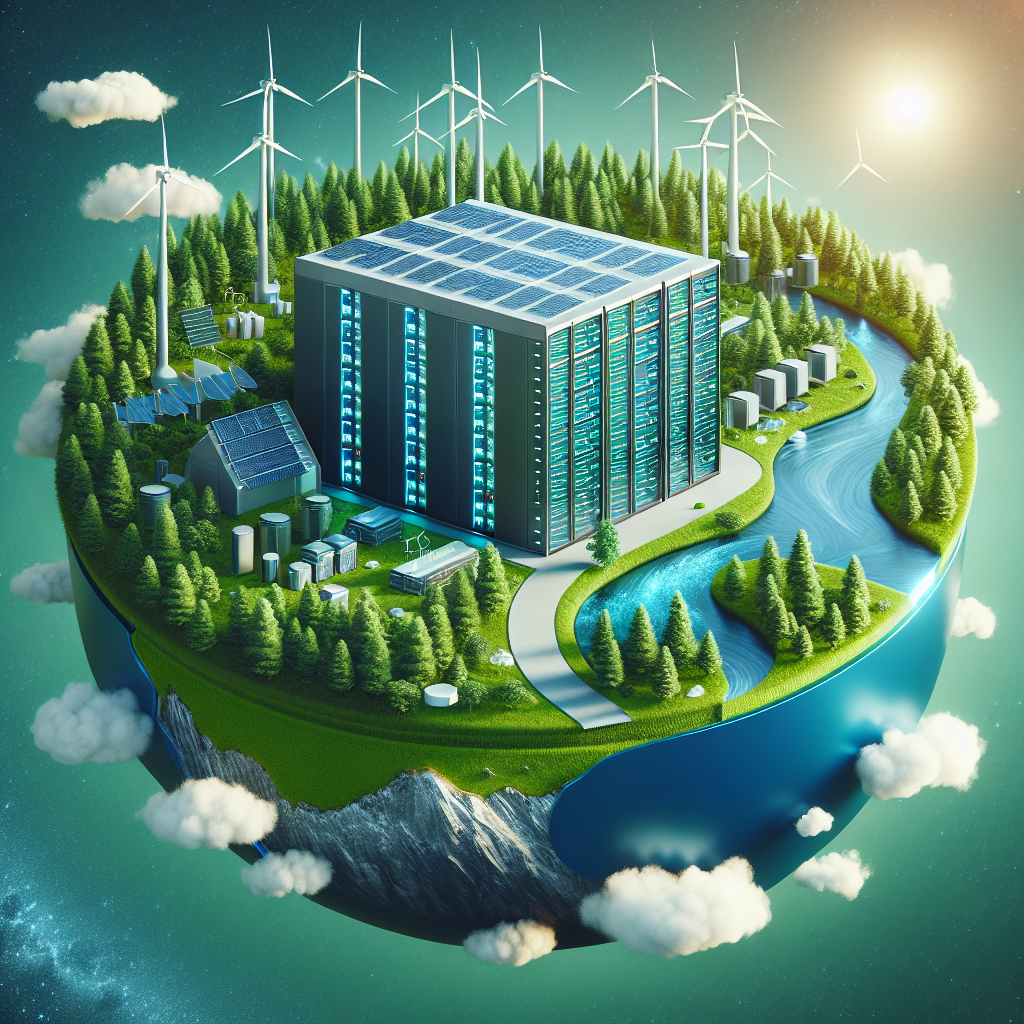
Sustainable Solutions: How Data Centers are Leading the Charge Towards a Greener Future
In today’s digital age, data centers have become an essential part of our everyday lives. From storing and processing information to powering the apps and websites we use, data centers play a crucial role in keeping our world connected. However, with the increasing demand for data storage and processing, data centers are also becoming one of the biggest energy consumers, contributing to a significant carbon footprint.As concerns about climate change continue to grow, the need for sustainable solutions in the tech industry has never been more pressing. Fortunately, many data centers are leading the charge towards a greener future by implementing innovative technologies and practices to reduce their environmental impact.
One of the key ways data centers are becoming more sustainable is through energy efficiency. By optimizing their cooling systems, upgrading to more energy-efficient equipment, and implementing intelligent power management systems, data centers can significantly reduce their energy consumption. In fact, some data centers have been able to achieve energy savings of up to 40% through these measures.
Another important aspect of sustainability in data centers is the use of renewable energy sources. Many data centers are now investing in solar, wind, and hydroelectric power to reduce their reliance on fossil fuels. By harnessing the power of renewable energy, data centers can significantly reduce their carbon emissions and contribute to a cleaner, greener future.
In addition to energy efficiency and renewable energy, data centers are also exploring innovative cooling technologies to reduce their environmental impact. For example, some data centers are utilizing free cooling, which uses outside air to cool servers instead of traditional air conditioning systems. This not only reduces energy consumption but also minimizes water usage and waste heat.
Furthermore, data centers are also focusing on sustainable practices in their construction and operations. From using eco-friendly building materials to implementing recycling programs for e-waste, data centers are taking steps to minimize their environmental footprint throughout their lifecycle.
Overall, data centers are playing a crucial role in driving towards a greener future. By implementing energy-efficient technologies, utilizing renewable energy sources, and adopting sustainable practices, data centers are leading the way in reducing their environmental impact and setting a positive example for the tech industry as a whole. As the demand for data storage and processing continues to grow, it is essential for data centers to prioritize sustainability to ensure a healthier planet for future generations.
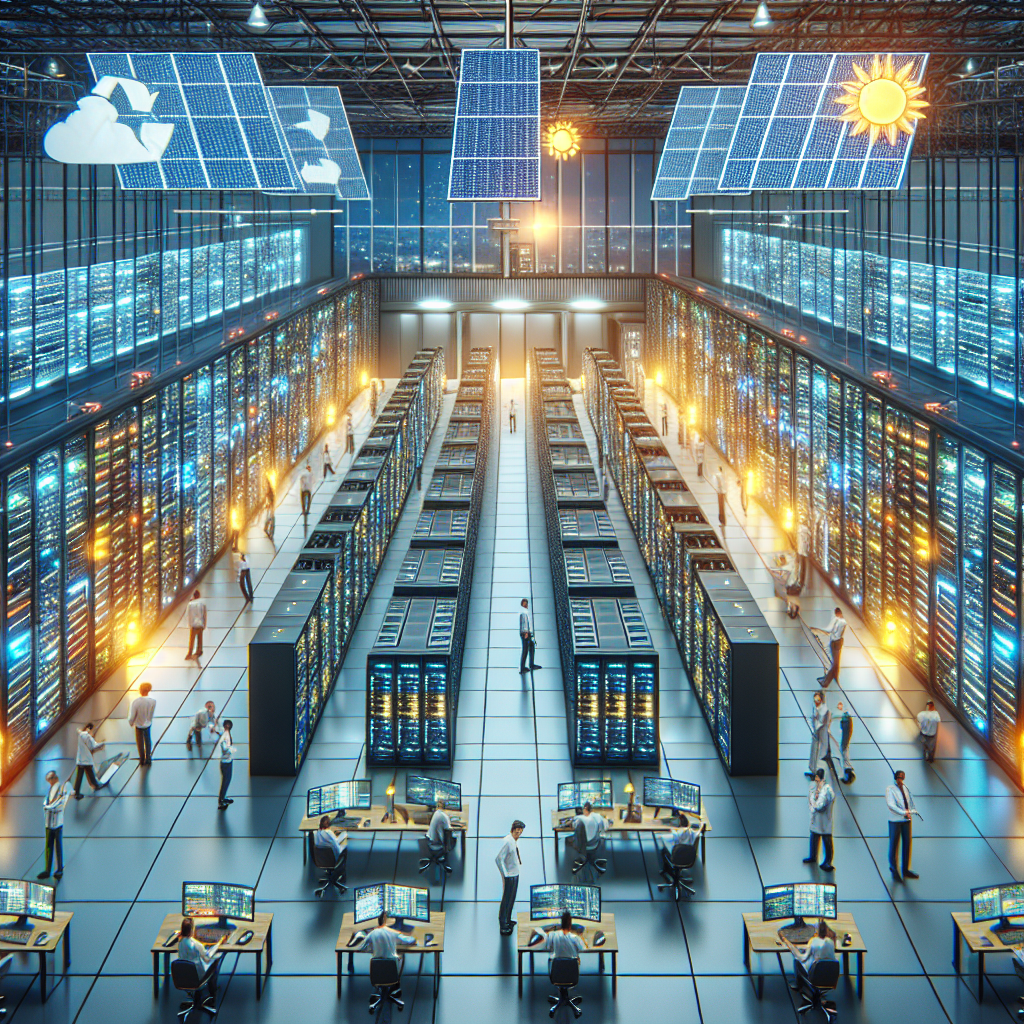
Creating a Sustainable Data Center: The Role of Facilities Management
Data centers play a critical role in the operations of businesses and organizations by storing, managing, and processing large amounts of data. With the increasing reliance on technology and data, the demand for data centers is growing rapidly. However, the environmental impact of data centers is becoming a growing concern, as they consume vast amounts of energy and produce significant amounts of carbon emissions.Facilities management plays a crucial role in creating a sustainable data center by implementing strategies to reduce energy consumption, minimize waste, and lower carbon emissions. By focusing on energy efficiency, waste management, and sustainable practices, facilities managers can help to mitigate the environmental impact of data centers and contribute to a more sustainable future.
One of the key strategies for creating a sustainable data center is to improve energy efficiency. Data centers are known for their high energy consumption, as they require large amounts of electricity to power servers, cooling systems, and other equipment. By implementing energy-efficient technologies, such as virtualization, energy-efficient servers, and airflow optimization, facilities managers can reduce energy consumption and lower operating costs.
In addition to improving energy efficiency, facilities managers can also implement strategies to minimize waste and promote recycling. Data centers generate a significant amount of electronic waste, such as old servers, networking equipment, and cables. By properly recycling and disposing of electronic waste, facilities managers can reduce the environmental impact of data centers and prevent harmful chemicals from entering the environment.
Furthermore, facilities managers can also promote sustainable practices, such as using renewable energy sources, implementing water conservation measures, and reducing carbon emissions. By investing in renewable energy sources, such as solar or wind power, data centers can reduce their reliance on fossil fuels and lower their carbon footprint. Additionally, implementing water-saving technologies, such as cooling towers and water recycling systems, can help to conserve water and reduce the environmental impact of data centers.
Overall, facilities management plays a critical role in creating a sustainable data center by implementing strategies to improve energy efficiency, minimize waste, and promote sustainable practices. By focusing on sustainability, facilities managers can help to reduce the environmental impact of data centers and contribute to a more sustainable future. With the increasing demand for data centers, it is essential for facilities managers to prioritize sustainability and implement environmentally friendly practices to ensure the long-term viability of data centers.
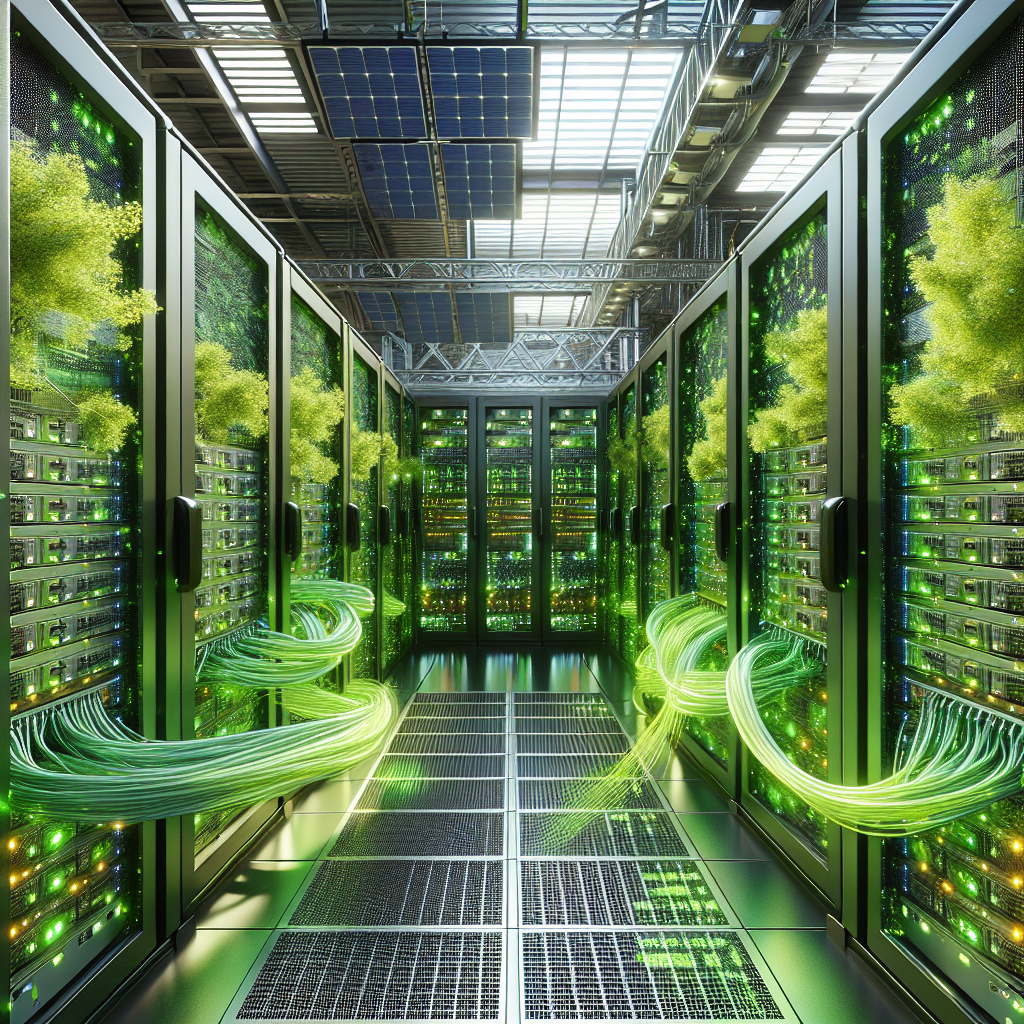
Building a Sustainable and Efficient Data Center Infrastructure
In today’s digital age, data centers are an essential component of modern businesses. They house the servers, storage, and networking equipment that form the backbone of our digital infrastructure. However, data centers are also one of the largest consumers of electricity in the world, accounting for approximately 1-2% of global energy consumption. As the demand for data continues to grow exponentially, it is more important than ever to build sustainable and efficient data center infrastructure.There are several key strategies that businesses can employ to reduce the environmental impact of their data centers while also improving efficiency and reducing costs. One of the most important steps is to optimize the physical infrastructure of the data center itself. This includes ensuring proper airflow and cooling systems, as well as using energy-efficient servers and storage equipment. By maximizing the efficiency of the physical infrastructure, businesses can reduce the amount of energy needed to power and cool the data center, resulting in significant cost savings and a smaller carbon footprint.
Another important aspect of building a sustainable data center infrastructure is the use of renewable energy sources. Many data centers are now powered by solar, wind, or hydroelectric energy, which helps to reduce reliance on fossil fuels and lower greenhouse gas emissions. By investing in renewable energy sources, businesses can not only reduce their environmental impact but also insulate themselves from fluctuations in energy prices and supply.
In addition to optimizing the physical infrastructure and using renewable energy sources, businesses can also implement virtualization and cloud computing technologies to improve efficiency and reduce energy consumption. By consolidating servers and storage resources onto virtual machines, businesses can reduce the physical footprint of the data center and eliminate the need for redundant hardware. Cloud computing allows businesses to scale their infrastructure up or down as needed, reducing energy consumption during periods of low demand.
Finally, businesses can also take steps to improve the overall sustainability of their data center operations. This includes recycling and properly disposing of electronic waste, using energy-efficient lighting and HVAC systems, and implementing water-saving technologies. By adopting a holistic approach to sustainability, businesses can not only reduce their environmental impact but also improve their reputation among customers, investors, and other stakeholders.
In conclusion, building a sustainable and efficient data center infrastructure is essential for businesses looking to reduce costs, minimize their environmental impact, and future-proof their operations. By optimizing the physical infrastructure, using renewable energy sources, implementing virtualization and cloud computing technologies, and adopting sustainable practices, businesses can create a data center that is both environmentally friendly and cost-effective. Investing in sustainability now will pay off in the long run, as businesses are able to adapt to changing regulatory requirements, consumer preferences, and market conditions.
